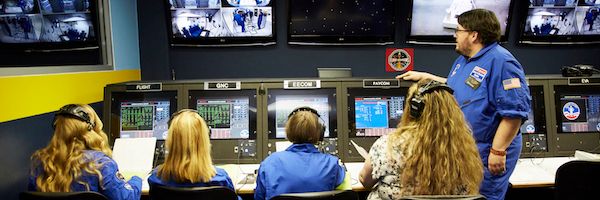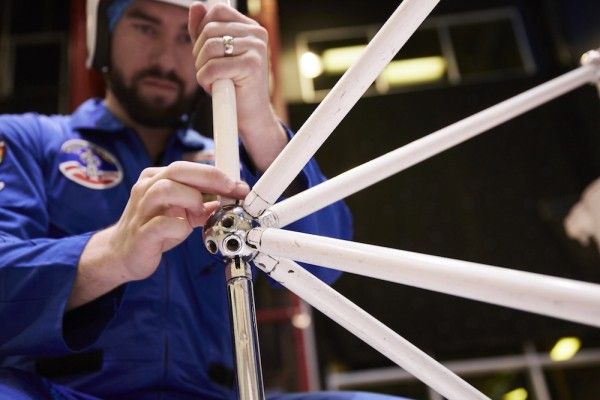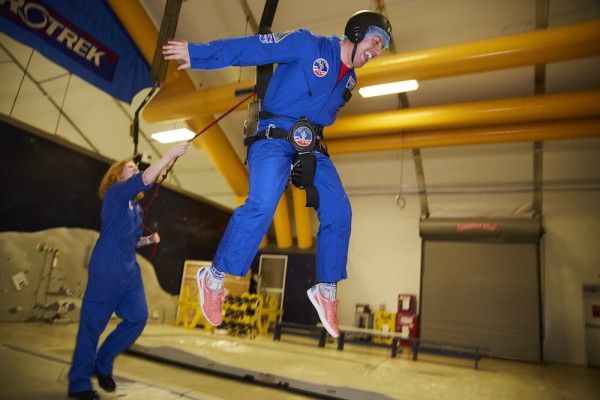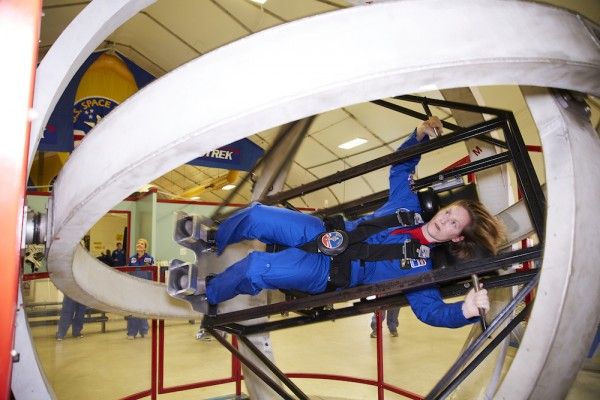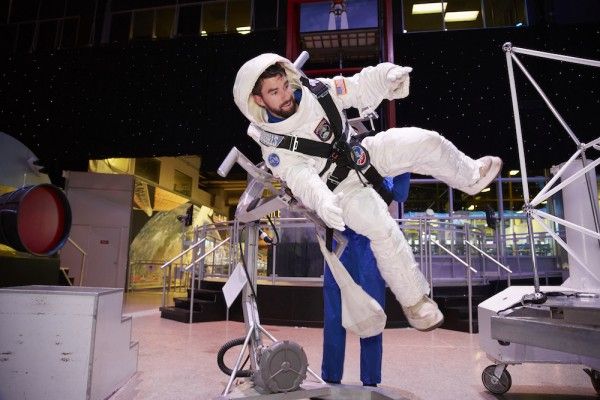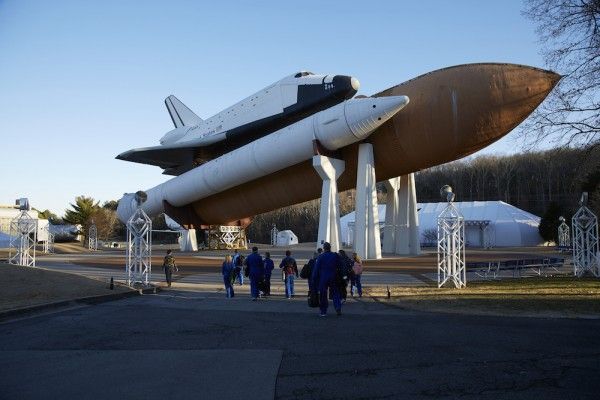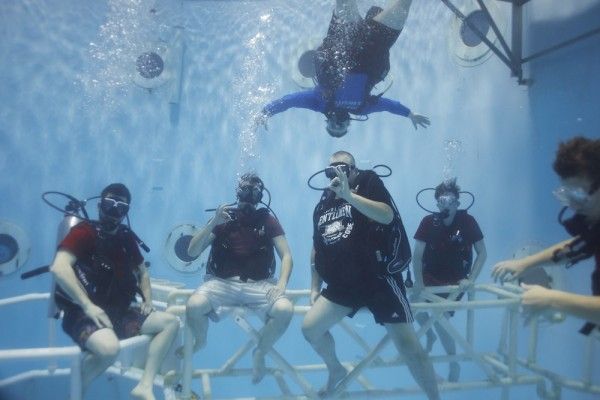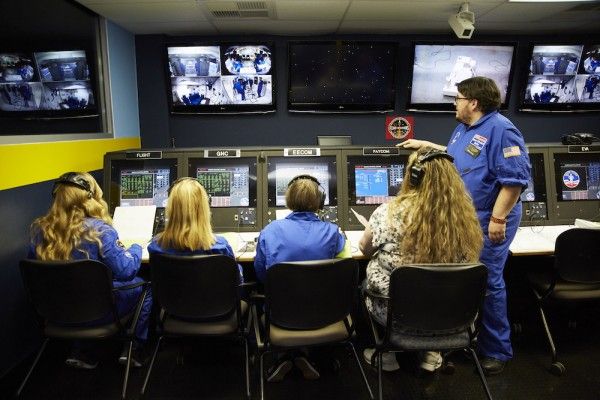I never wanted to be an astronaut. Even when I was seven, I looked up to the stars and the blackness surrounding – and thought, ‘Nope, not for me.’ There was something terrifying about the infiniteness of space – the blackness, only blackness with tiny specks of illumination. I found the night sky deeply unsettling. I remember, as a child, watching the 80s film Space Camp (with Kate Capshaw, Tate Donovan and twelve-year-old Joaquin Phoenix) and being absolutely mortified when the five kids accidentally get launched into space. If that ever happened to me – I’d be doomed, lost forever in the blackness. I vowed right then and there (mostly to myself) that I would NEVER go to Space Camp.
Twenty years later – I broke that vow.
In conjunction with the release of One Strange Rock, Nat Geo invited a group of journalists to travel down to Huntsville, Alabama – the home to Space Camp and the U.S. Space & Rocket Center. The thinking - to promote a docu series told from the astronaut’s perspective, let’s teach a bunch film & science journalists what its actually like to be an astronaut (well, more so the Space Camp version of what being an astronaut is like). This involved two space missions, a deep ‘sea’ diving experience, astronaut simulations, mini-rocket & shield building, and a tour of the campus.
Space Camp, at first blush, feels a bit like a mix between an amusement park and a prestigious learning center. In the middle of the campus, there’s an almost exact replica of a rocket, but then less than twenty feet away from it, there’s a ‘Space Shot’ launch – aka one of those amusement park drop towers. It’s this intermingling of the fun and serious that makes Space Camp stand out most. On the one hand – you could spend hours touring their excellent museum (complete with an actual rocket & miscellaneous space memorabilia) or you could spend your time riding a series of carnival-esque ‘space’ attractions (besides the drop tower, there’s a Orbital Spin Simulator – aka a swing ride).
When I arrived at camp, I was handed a bright blue space jumpsuit, complete with the Space Camp insignia emblazoned onto the pocket. I’ll admit to feeling slightly ridiculous, especially considering that other than the journalists, every other person on campus seemed to be under the age of fifteen. I could even sense a couple snickers from the ‘cool’ kids as I passed by… But within twenty or so minutes, these feelings dissipated. The suit felt like an official uniform and I – an official Space Camp trainee.
It’s amazing how serious everything felt. Ostensibly we (the journalists/Space Cadets) were asked to complete two missions – one as Flight Crew, the other as Mission Control. The missions were fairly simple – you’d hit a series of buttons, perform a couple tasks, read out a line or two and then land the spacecraft. The worst-case scenario – you crash or the shuttle blows up and then the simulation ends, and you go back to the Marriott for a drink. Yet this simulation (designed for high-schoolers) felt like life and death. Failure simply wasn’t an option. Also it would be really embarrassing.
I asked our guide (a Space Camp counselor) if it was even possible to fail a mission. He assured me that, in fact, it happens all the time. I naturally followed up – ‘Have after crashing, any children cried?’ He laughed the question off, ‘No – of course not.’ I don’t think he realized I was mostly asking for myself. As luck and dignity would have it though – we didn’t fail either mission, successfully completing a low orbit trip to space & back, and later a far more hypothetical trip to Mars. Tears and disappointment were spared.
Around the Space Camp facility – there are plaques and boards listing various notable alumni (Elon Musk, Charlize Theron…); but I noticed a curious lack of any Space Camp (the film) memorabilia. Even the gift store doesn’t sell the 80s flick. Yet during lunch, Pat Ammons, Director of Communications, mentioned that the film continues to be one of the main reasons kids come out to the camp. In fact – Space Camp is so ingrained in many children’s heads that some are disappointed when they find out every mission is a simulation and they don’t actually end up in space on a frightening life-or-death trip.
Before Space Camp, I would have called these kids crazy and/or suicidal. Someone should really have a talk with their parents. But after spending a couple days at the camp, I must admit – I get it. There’s something to the communal experience of working with a group of strangers, solving problems, conducting experiments and ‘flying’ in space. My time at Space Camp scratched an itch I didn’t even know I had. Suddenly I too began to wish our missions weren’t just simulations, that we were actually in space, staring down at the Earth, taking commands from NASA headquarters. Don’t get me wrong – the infinite darkness of space still absolutely terrifies; but, hey, who doesn’t secretly want to stare into the abyss?
I guess, in the end, I really do want to be an astronaut... Damn you, Space Camp.
One Strange Rock is on National Geographic now.

